Every diver needs a light they can count on
A dive light is a watertight flashlight carried by a scuba diver to illuminate a dark underwater environment. Every diver needs a light they can count on. Dive lights are specially designed and engineered to deliver dependable illumination for underwater adventures such as night dives, cave dives and wreck dives. Whether to light up caverns, peer inside sunken vessels, examine underwater structures, or to explore the untouched marine wonders, lighting is a critical factor that influences diving safety, task performance and underwater experience. A good dive light is expected to produce underwater visibility at a sufficient depth and distance even when navigating murky water. It should also enable color reproduction of the underwater environment as faithful as possible for accurate performance of the diving task or the enjoyment of a diver’s experience. Divers also use dive lights to signal other divers in adverse conditions or mark their location.
LED lighting offers peace-of-mind reliability
Underwater lighting is now one of the countless applications of LED technology. The use of dive lights that implement legacy technologies, e.g., halogen, xenon and high intensity discharge (HID), involves a lot of compromise. Inefficient use of energy leads to the need for a battery system of higher capacity, which corresponds increased physical volume and weight. Legacy light sources are glass-enveloped bulbs that require a bulky optical system to provide optical control. The glass enclosure is susceptible to breakage when exposed to shock, vibrations and impacts. The short life expectancy of these light bulbs makes frequent lamp replacement necessary so as to eliminate the uncertainty of reliability during dive operations. Another limitation of legacy technologies is that the light spectrum does not allow for application specific optimization.
LEDs, in contrast, outperform traditional light sources in virtually all aspects of lighting. Improved luminous efficacy translates to extended run time. With a long lifespan and solid state durability, LEDs offer peace-of-mind reliability. The deeper the dive, the greater the hydrostatic pressure of that water on diving equipment. The small size of LEDs enables more compact design of dive lights. Significantly reduced surface area on which the water can exert pressure allows the dive lights to be safely submersible to hundreds of feet below the water’s surface. The spectral power distribution (SPD) a light source can affect color characteristics (color temperature and color rendition) of the light emitted by the light source. The unique emission mechanism of LEDs allows for precise spectral control to improve the effectiveness of the light spectrum for diving applications.
Types of dive lights
LED dive lights may take the form of torches, pistol-grip lights, lanterns, or canisters. Torch dive lights are handheld but may also be attached to a hand mount. A soft or hard Goodman style handle fits over a diver’s hand and allows a dive light to be securely affixed to it. Canister dive lights are products of a conventional design with allows to operate the lights for a generous amount of run time with the use of large external battery packs. With the industry’s adoption of high capacity lithium-ion batteries, this type of lights are giving way to LED torches which have self-housed batteries. A canister dive light consists of a light head that is usually attached to a Goodman style handle and a canister that houses the battery and attaches to a diver’s tank or buoyancy control device (BCD).
Dive lights can be divided into two different types: primary and secondary. Primary dive lights provide the main source of underwater illumination and are thus designed with an adequately high light output and long run time. Secondary dive lights, on the other hand, are backups that serve as emergency lights should the primary fail. These lights are less powerful and have a shorter run time than the primary lights but are typically more compact and lightweight. Primary dive lights produce lumens in a four-digit amount whereas secondary dives lights typically produce several hundred lumens. Night divers are advised to carry at least one secondary dive light in addition to a primary dive light.
Beam control
Typically, dive lights are designed with a concentrated beam (5°-20°) which can punch through the water for maximal visibility. Spotlighting is especially helpful when there is need for the light to pierce through murky water, point out interesting objects to other divers at a distance, or to penetrate into crevices. Floodlighting is usually designed as an additional feature for the purpose of brightening underwater surroundings, shooting photos and videos. Professional underwater photography and videography lighting is provided by underwater video lights that are specially designed to produce uniform, wide flood light.
Diving spotlights generally take advantage of high power LEDs to deliver high punch light. High power LEDs built on ceramic substrates or the CSP platform are capable of producing volume of lumens from a small apparent source size, which enables tighter beam control and powerful lighting for throwing a spectacularly bright beam over a long distance. Optical control is accomplished with reflectors or total internal reflection (TIR) lenses. Some products may be equipped with zoom lenses that can slide forward and back to allow a variable light distribution for either long-distance spotlighting or wide coverage floodlighting.
Spectral considerations
As a side note, professional floodlighting system typically use mid-power discrete SMD LEDs or COB LEDs which allow the light to be designed a wider beam with more uniform distribution of light. The LEDs incorporated in dive lights usually come with a color temperature around 6000° K. A high color temperature relates to a light spectrum with a higher percentage of blue photons which travel a lot further in water than yellow, red and green light. The spectral power distribution (SPD) of the light source may also be tuned to enhance its color rendering ability. Dive lights can be mounted with filters, such as a UV filter which is used to create the fluorescence effect and a red filter which is used to create a focus light without disturbing marine life.
Battery
LED dive lights can be powered by disposable and rechargeable batteries. Lithium-ion rechargeable batteries gained a strong foothold in portable power applications due to their high energy density, deep cycling capability and long cycle life. Batteries of this type have built-in charge control and protection circuitry to monitor and control their charging and discharging characteristics. Many products allow battery charging via an integrated micro-USB charging port. This design reduces the risk of flooding due to human error or bad O-ring maintenance as a consequence of frequently opening the sealed battery compartment to change the batteries or charge the batteries externally.
Drive current regulation
A constant current LED driver regulates incoming battery power to an appropriate forward voltage and current for the connected LEDs. The LED driver may include a dimming function and work in tandem with an integrated a microcontroller (MCU) to operate a dive light in different modes such as steady output at different levels, strobe and SOS. The microcontroller also accepts control inputs from the user interface which may be a rotary switch on the light head or a magnetic push button.
Construction
The housing of an LED dive light is generally made of aluminum which provides strength and durability to protect the LEDs, electronics and batteries. The optical assembly is protected by an impact-resistant tempered glass. Multiple O-ring seals are typically used to ensure high watertight integrity against high hydrostatic pressure.

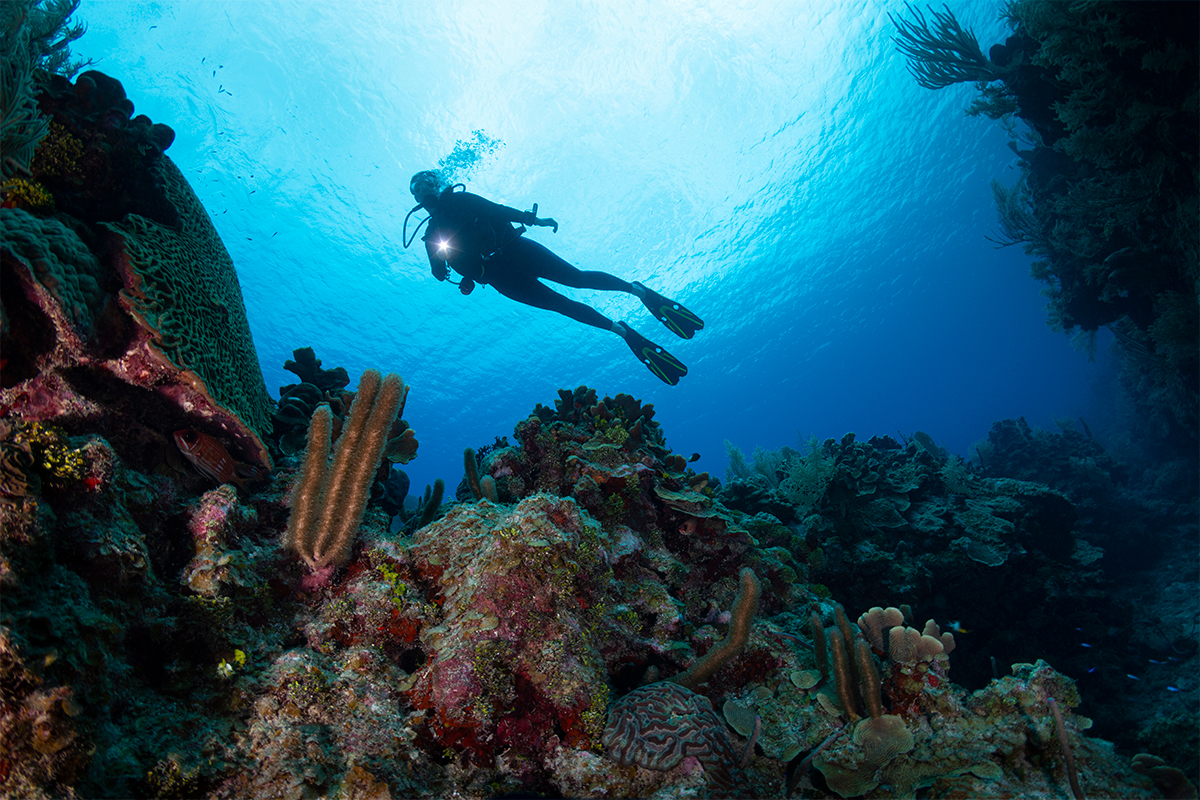
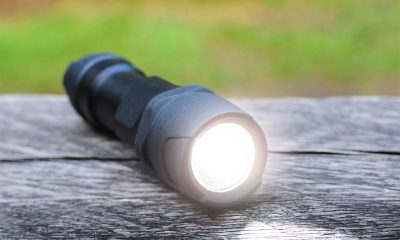


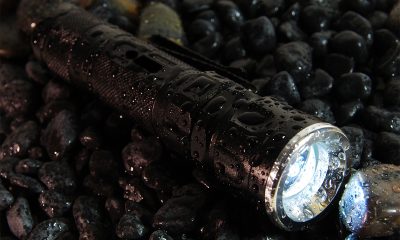


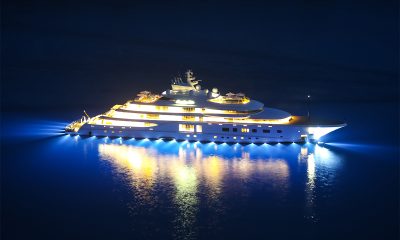
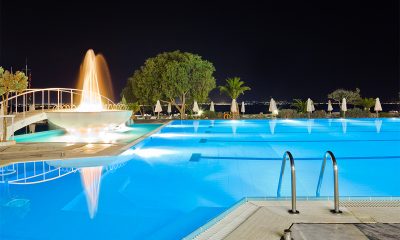
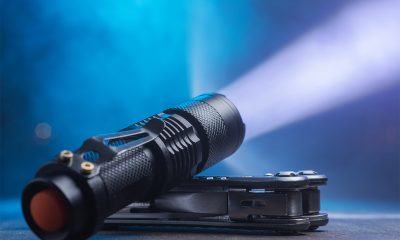
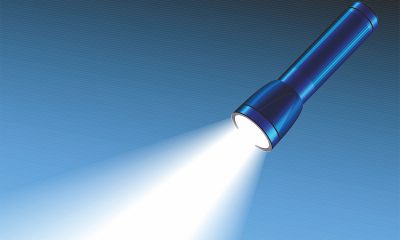
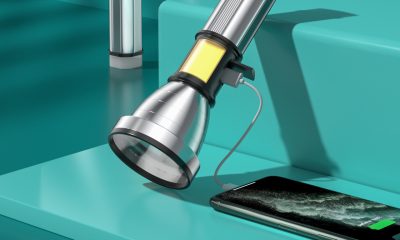






Loading...